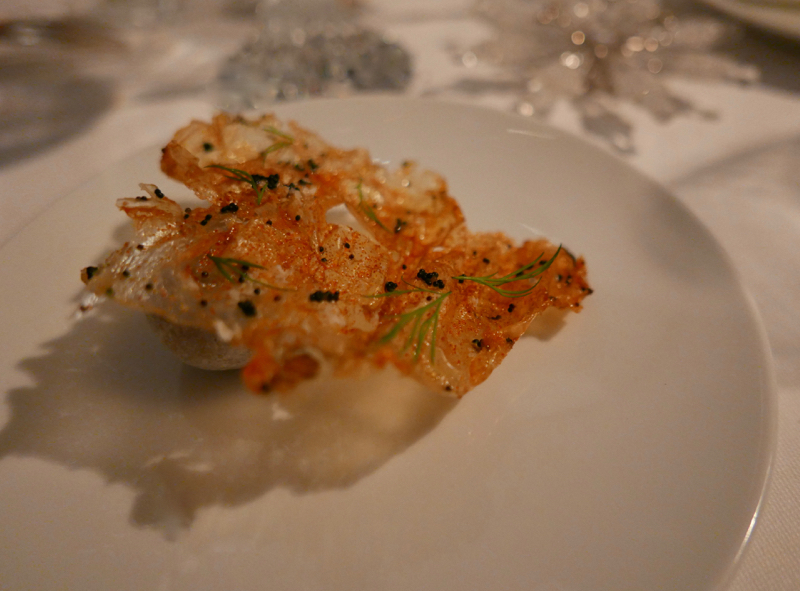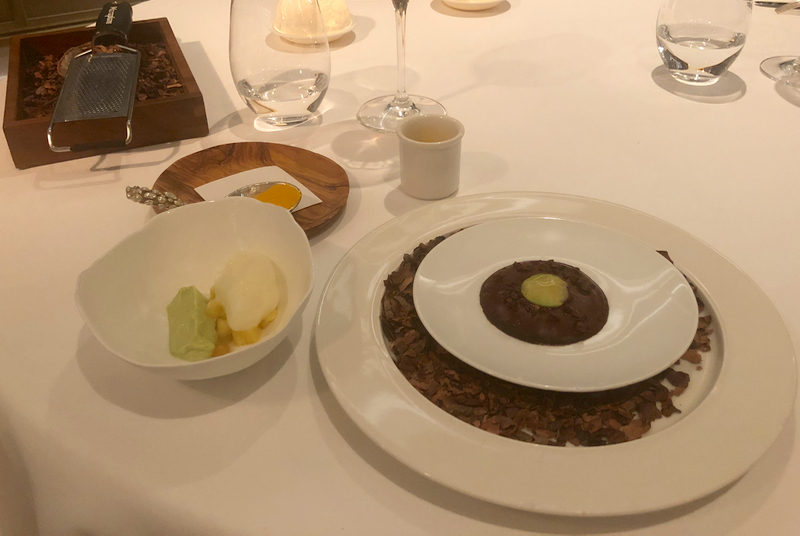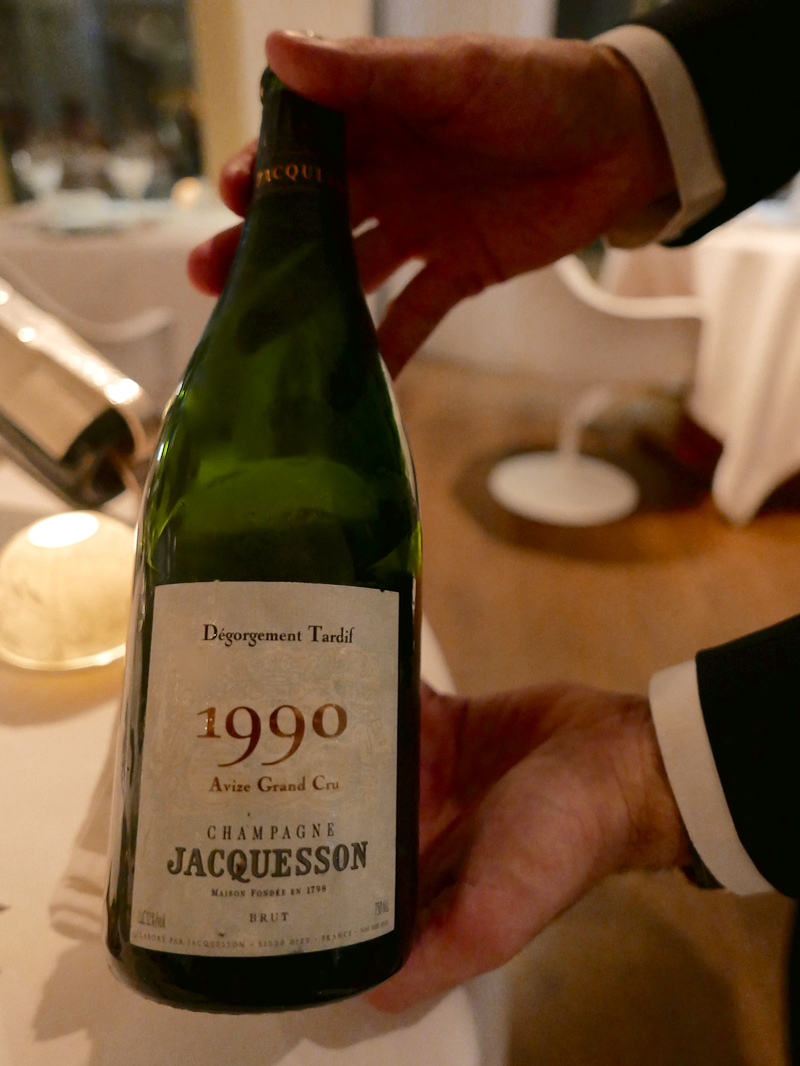Le Petit Nice in Marseille: chef Gérald Passedat transforms invisibly the Mediterranean sea
In the intrepid hands of a third generation family, the chef Gérald Passedat has transformed his iconic centenarian Le Petit Nice restaurant and hotel to the most luxurious, yet authentic cocoon in Marseille. Inspired by the women and men in his family, most of them passionate cooks or opera singers, Gérald Passedat transformed the simple cuisine of the Mediterranean into a three Michelin star experience that he has upheld since 2008.
Still, the success of his gastronomic oeuvre is dedicatedly overseen by his father. Jean-Paul Passedat greets guests in the bright, sea-facing reception hall and, if your French parlance allows for, eagerly shares his life experience by and on the sea. The chef’s British bulldog Leon nonchalantly joins the warm family welcome suite. On the terrace he strolls from a table to table and perhaps since he is not allowed into the dining room, lures out any food passing through your fingers. Leon is the well-behaved mascot of Le Petit Nice, but once he gets a ball tossed out, he wants more, let’s play! We fell in love with this sad-eyed dude and the airy, boutique Relais et Châteaux hotel crashing on the rocky cliffs hanging down into the Mediterranean. Eat and stay. The family hotel cum restaurant embraces your sense for a chic, breezy design and fine cuisine.
Tuning to the Mediterranean nature
The sea-kissed cuisine at Le Petit Nice by Passedat in Marseille resembles conceptually the pure essence of nature seeking food at the two star Mirazur on the Italian border with France, but is more enjoyable. Radiating the integrity of the locally-raised chef, the providers of his precise catch and nature’s produce star on the menu. Olive oil, garlic, seafood and salt flag Passedat’s Marseille plates in “intermingling of the culture of a port with the salty spray of the sea as it drifts from afar, bringing with it all the fantasies one imagines from constantly scanning distant horizons”, highlights the chef. Fish is caught very far from the shore, said Monsieur Passedat senior, and his son alerts: ”All our dishes and desserts may vary according to the catch and the market. The Mediterranean rules. The service of this menu depends on the rarity of the products.” Therefore, your meal may slightly differ from your last experience at Le Petit Nice. Gérald Passedat is the Alain Passard of the sea. At Le Petit Nice he rarely adds dairy (his favourite brousse du Rove fresh goats’ curds features in his bistros, while butter and cheese plate are optional) and doesn’t add salt as the seafood itself provides a generous dose of sodium. The food is far from bland, it is seasoned with nature. BOUILLONS for shellfish and seafood essentially balance or underline the sea flavours in the dishes at Le Petit Nice. From a portable cabinet you are invited to create your own bouillon to be brewed with the amouse-bouche. If you select one of the tasting menus as we always do at La Petite Nice, then having one personalised dish feels liberating.
Fresh, sun-kissed vegetables, fish and seafood and Mediterranean herbs are his favourite tools expressing the naturally blessed region. With changing seasons, lemons welcome the year, then strawberries give way to peaches, melon, ripe succulent figs, while apples and pears round up the fall desserts.
The marine experience at Le Petit Nice
There are twelve cooks and fifteen in the high, summer season. Like ants pacing in and out of the kitchen between a narrow walkway of their convenient housing, their labour is transparent. In a Bourdain-like “no reservations” fashion, zoom through the large windows peeking from the outside and inside upon entering the reception hall, you see it all.
In summer, an aperitif with pre-appetisers are served outdoors to indulge the vista of the Château d’If and the Planier lighthouse. Accompanied by the concert of crashing waves, a baby octopus wrapped in a deep fried pastry, an artichoke in a crisp tartlet topped with microplaned dried eggplant, and a very salty (probably cooked in seawater!) fish broth with your choice of local herbal infusion (sage, rosemary leaves, and various flowers) swim onto your table.
Moving inside to the bright, crisp, sea-inspired dining room, tables clad in white robes, the waiters herd in proper appetisers. A raw oyster with thin shavings of organic vegetables under a sea bream carpaccio, another but larger, so clean and pure tasting on a tongue melting oyster and a trio of fish beignets with fish emulsion, all at once. I was turning into a mermaid.
There is a la carte, but the set menus better translate the chef’s culinary marine philosophy. When compared to the most decadent Discover the Sea (380 €) menu comprising 13 courses of sea infused pleasure with a subtle sweet finale, currently the most affordable 100th ANNIVERSARY MENU (110 €) is a gift to connoisseurs from the centenarian hotel and restaurant.
Decadence was also our superb New Years Eve dinner at La Petite Nice. A quiet affair with sublime food. This menu sourced from the a la carte plates. From shallow waters came now rare and under-appreciated Sea Anemone Fritters (seasonally a Rainbow wrasse fish fritters are served instead), Southern Fish in Caravan (another signature plate of raw oysters with other shellfishes cut like a carpaccio) and Corolla. Moving to deep seas with four fish plates that included the delicate Lucie Passedat Sea Bass provided by Felix (fisherman), a signature first plate ever created by Gérald Passedat for Le Petit Nice as a tribute to his grandmother “as this was her favourite fish. A slice of steamed sea bass, colourful ribbons of courgette and cucumber, a medley of light and dark greens laid on an intensely flavourful “base”. Red and green tomatoes, lemon, basil, coriander, wild fennel, olive oil and a touch of truffle – a reminder of my family’s roots in the Quercy region”, muses the family-bound chef. Followed by another signature fish, the Red Mullet provided by Veronique, then entrusting to the whims of the sea with Alain’s catch of the day; and finally “Guite” Sea Garden. From the land came organic seasonal vegetables with their juice extractions.
In the sweet realm the chef needs to balance the salty pungency of the meal with subtle desserts, therefore “no butter, no cream, no alcohol and very little sugar, but plenty of fresh fruit, mango, papaya, yuzu or sweet chestnuts, with a delicious milky-textured Calpis or some fermented milk, with an acidic counterpoint, flavoured with fruit vinegars and my herbes de vif. Chocolate is one thing I do love from dry land”, confesses the chef. Our NYE desserts were “Coming up Slowly” in a suite of three delicacies expressing more the purity of the produce than any pretentious pastry tra-la-la. Turmeric & Cocoa in three services (by the French chocolatier François Pralus, whose Melissa, Fortissima or Sao Tomé are used at La Petite Nice) one bowl is warm and cold with avocado, the other is made with turmeric, aloe vera, and pineapple, and last with bay leaf roasted pineapple; all refreshing but deep, not overpowering. We loved the subtlety. Chocolate also plays a part in The Chrysalis of a chocolate caramel filled with Abysse Noir chocolate, orange, imperial mandarin.
This summer we embarked on the signature “bouille abaisse” in the chef’s two words, a fish soup menu that the chef introduced about five years ago. Local specialty deconstructed into a three star fancy that must be booked in advance. “The fish is added in three lots (whereas convention requires just two), three diving stages to keep those wonderful sea flavours”, explains the chef, adding “First the raw shellfish, like the ones I used to collect in the Calanques when I was a child – eaten with small fillets of rainbow wrasse, the “small fry”. We were served raw clams, mussels (looking like pink fish liver) and shellfish carpaccio on a bed of fresh palm cabbage drizzled with olive oil, parsley, lemon zest and juice. A sea foam on top added to the austerity that can only appreciated by serious seafood lovers or these who grew up sipping shellfish straight from the sea. The sea bounty was provided by Jean-Claude et Philippe “Stache”.
“Then come the fish from the shallower waters, like anglerfish and weever, which vary with the seasons and with what the Mediterranean brings up, which are plunged into a light saffron bouillon.” Our second serving of the bouille abaisse was an amazing saffron broth with green vegetables and four fishes with their skin on, a juicy lobster tail and a side of organic vegetables in a saffron broth. In summer we were served:
Rouget – red mullet that tasted so different from grilled, moist and firm
Ruca – a silver skin shallow water catch that tasted as delicate as an egg white
Marbre – richer, chewier dark skinned
Monkfish – dry, melting like milled fish meat
“Finally, the fish from the deep waters, like the large scaled scorpion fish or the sea bass – cooked whole to retain maximum moistness – a thick rockfish soup, potatoes cooked in the fish stock and a real fisherman’s spicy sauce, made with tomatoes, chilli and garlic.” A fish trio of light and soft Vive, Skate and an amazing Mullet with rather dry and meaty bite, yet moist and seasoned with anise. On another plate came superb langoustines with saffron, but the cooked potato with an ultra fishy, saffron rich bouillabaisse cooked with small crabs that was poured over was so intense that I could not ladle another spoonful. Instead of a rouille, spicy “real fisherman’s” sauce kicked our palates with an intensity of a sea storm. Indeed “The abyss”.
Cheese from Philippe Olivier and Benoit Lemarie are paraded on the sductive chariot. There is local fresh goat’s and sheep’s, a wide selection from Provence, Banon, Roquefort, Corsican hard sheep and other well and less-known French cheeses. An irresistible bread roll pinched through with straws of hay, fig and walnuts is is served with it, I had to ask for extra, too good.
After all that salty food, a change of water on our table to clean our palates announced the sweet, yet subtle indulgence to come.
The Softness pre-dessert of a roasted peach, peach sorbet and vinegar, almond milk foam, a peach carpaccio with aromatic saffron jelly and souffléd rice crisps was superb, got my cravings going for the main desert. Yet again in a multi-plate cocoa and fruit inspired fantasy, the excellent Cocoa bean was similar to the NYE chocolate dessert I had, just the winter persimmon passed its season so the exotic pineapple stepped in. The bean was caramelized with muscovado sugar and spiced with turmeric jam, a slice of avocado and cocoa cream contrasted with a a Turmeric sorbet and a light Pistachio cream, a sip of pineapple and turmeric smoothie freshened it up, while pineapple pate de fruit in cubes and sweet pineapple water foam brought another dimension of textures and it was quite light. The petits fours arranged in a wooden box and silver bowl came with the digestive coffee or tea. Le Petit Nice presented organic ripe seasonal fruits such as wild raspberries and cherries from Luberon in June, but also tiny délices like with cocoa dusted bonbon, celery tartlet and a crunchy sesame candy presented in a bowl of cocoa nibs.
The wine list focuses on France, offers some grande Champagne, Burgundy, Bordeaux, Loire and Rhone, but also local producers paired their vinous know-how with the sensibility of Gérald Passédat in the white CASSIS PASSÉDAT Domaine Clos SAINTE MAGDELEINE; the BANDOL ROSÉ CALANQUES, CUVÉE GÉRALD PASSEDAT, CHÂTEAU GUILHEM TOURNIER, and the more structured creation of Dominique Hauvette, the BAUX DE PROVENCE, ROSÉ HAUVETTE that suits bouillabaisse or lobster. The Rosé Calanques was deep, characteristic for the Bandol region further east along the Mediterranean coast. Further to the Rhone, the extraordinary Chateauneuf du Pape by Château Rayas, plenty of Burgundies (I recommend the Domaine des Lambrays, Clos de Lambrays) ideal for the light sea-focused meal and Grand Cru champagne such as the yeast-deep late disgorged 1990 vintage Jacquesson 1990 vintage, Avize that we toasted the NYE with.
Le Petit Nice also includes digestive herbs grown around Marseille and blended by Herboristerie du Père Blaize into his signature tisanes. After the gastronomic dinner TÊTE DU MALVALLON with thyme, anise and fennel is the most digestive of all.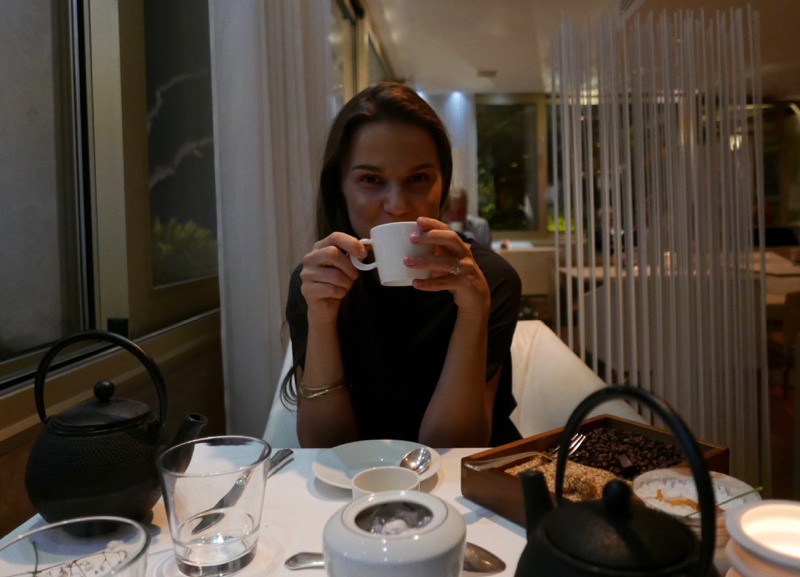
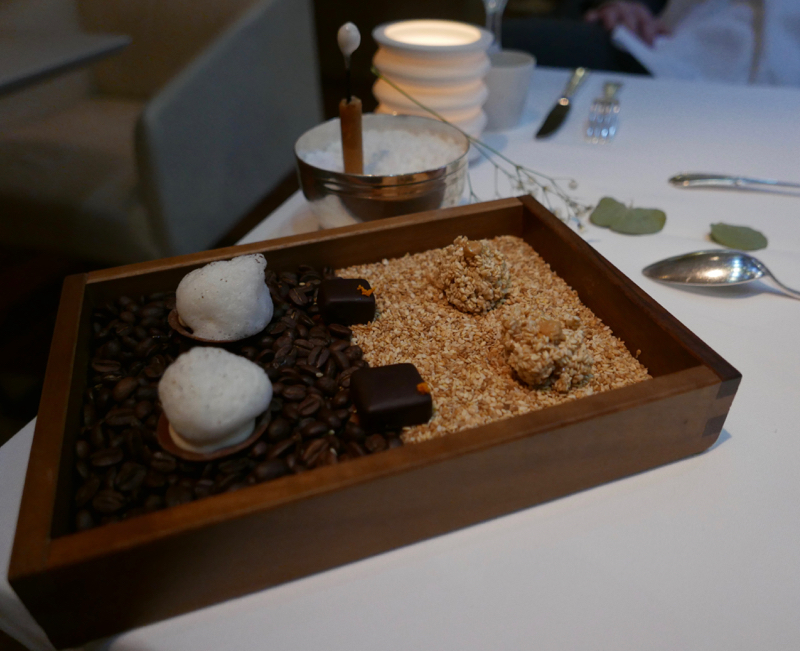
The chef’s sensibility to the aromas of nature elevated Le Petit Nice from a great family restaurant to a gastronomic destination luring the outside world into his kitchen. The hotel rooms above have been decorated like a super yacht so you feel like sailing into the Mediterranean. It is just out there behind the window. For a more casual meal, the intimate Albertine in the port, and newly build MUCEM museum in Marseille houses a mini Passedat gourmet emporium Le Môle Passédat:
La Table « bistrot chic » for lunch and dinner
La Cuisine restaurant « casual » lunch only
Le Café during the opening hours of Mucem
Les Kiosques
and a cooking school in the Fort Saint Jean. In Provence, in the greenery of the Parc National du Lubéron the chef developed the gastronomic concept for the restaurant in the art and wine driven Domaine de Château La Coste.
Anse de Maldormé, Corniche JF Kennedy, 13007 Marseille
+33 4 91 592 592
Lunch and dinner: Tue – Sat; closed Sunday & Monday. Contact for annual closure dates such as the week starting January 1st every year.















